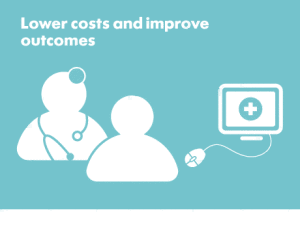
Final post in a four-part series.

Final post in a four-part series.
Marketing resource allocation planning is critical to assuring that limited marketing funds (and FTEs) are focused on marketing initiatives that have the best potential for driving revenue growth, improving overall business performance and positioning health systems for long-term success. Parts 2 and 3 of this series described the first two decision points in resource allocation modeling:
- First, what businesses, clinical programs or market expansion initiatives offer the best opportunity for growth and profitability?
- Second, within priority programs and service lines, what strategies and tactical initiatives will best achieve marketing goals?
The third decision point is: what infrastructure investments are required to optimize marketing performance and ROI? In other words, what capabilities, technologies, skill sets, business partners, processes and tools are necessary for the marketing team to effectively execute marketing strategy? Building a high-performing marketing team and the systems to support them are strategy-critical investments that will generate significant returns over the long term.
What should you consider?
- Structure, staffing and skill set of the marketing team. Is the team optimally organized and staffed to execute and manage against strategic priorities? Do they possess the skills required in today’s complex and competitive world – including business analytics and strategic thinking skills? Can they mobilize and align clinical, administrative and other functions to execute marketing strategy? Are they fluent in digital media and skilled in web, social networking and mobile technology platforms?
- CRM and call centers. Next, evaluate the capabilities, systems and processes to capture and respond to customer inquiries (both consumer and physician), and to capture, analyze and manage customer level data. Today, marketers are moving toward integrated customer contact centers that better leverage call center, web inquiry and CRM capabilities in order to connect customers with services, capture data to improve marketing decision-making, and measure the effectiveness of marketing investments.
- Digital marketing capabilities and systems. One of the biggest challenges facing marketers today is the pace of change and shift in investments required to ramp up digital marketing. Web, search, social media and mobile marketing are no longer optional – nor should they be secondary priorities. There is no better time to stop funding tactics with marginal returns (among my favorites are billboards) and plow those dollars into the staffing, training and systems to become digital marketing experts.
- Decision support systems. The key question for marketers is “do we have the information needed to inform our decisions about strategy, investments and outcomes?” Competitive intelligence, market research, trended performance data (e.g. volume growth, revenue, margin, etc.), market projections, industry trends, segmentation studies and other robust information sources are vital to effective marketing decision-making.
- Business partners and outsourced support. What to build in-house versus what to outsource is often a tough question. The rule of thumb is that if it’s not critical to core operations or a core competency in which you’re willing to invest and nurture, then outsourcing is probably the best alternative. Business or outsourced partners include advertising agencies, digital marketing firms, call center operations and research firms, among others. A periodic review of contract terms and performance is always a good idea.
- Shorten your “to do” list. Often, one of the more difficult tasks for marketers is to eliminate activities that do not contribute to growth and improved competitive performance. But in today’s environment, “squeaky wheels” must give way to an evidence-based approach to marketing investment. The key to success is focusing your time – and dollars – on fewer, more impactful activities.
Conclusion
More than ever, chief marketing executives are being held to a higher standard of accountability for return on marketing investments. A disciplined approach to marketing resource allocation planning is required to understand what programs, services or segments will best drive growth and improve business performance, and what activities and support systems will contribute most to those initiatives.
Both top-down and bottom-up approaches to marketing resource allocation planning are necessary; top down for strategic marketing planning across a health system’s portfolio of service lines and growth initiatives – and bottom up to develop specific marketing plans and budgets within each priority program.
Most important, perhaps, is to use a data-informed approach to gain organizational commitment to stay on strategy.
Read the series:





